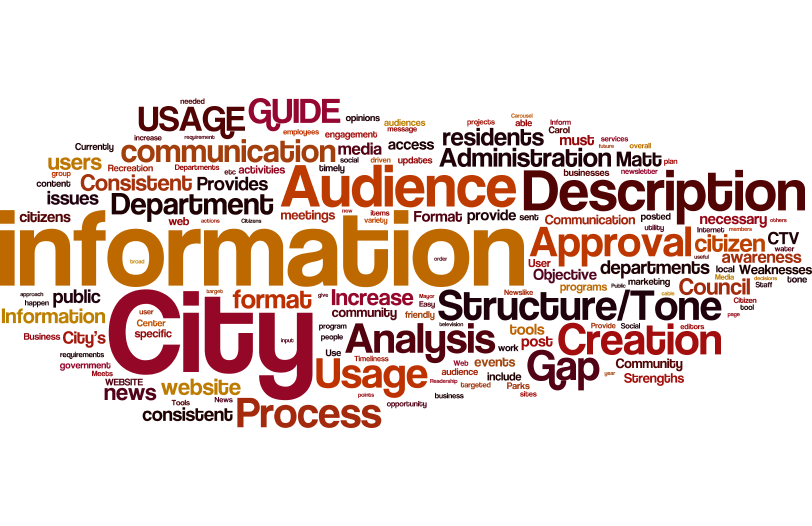
Rebecca Olson (LinkedIn and Twitter) currently serves as Assistant to the City Manager in the community of Shoreview, MN.
Do the Legwork: 4 Steps for Effective Communication in Local Government
 Government is full of information, data, facts, figures, numbers and statistics. As local government professionals we are routinely called upon to convey specific information to residents, council members, agencies, organizations, and the media. Sometimes this information is simple and easy to understand such as telling residents about a special event date, location and time. However, there are times in which the information we need to communicate is more complicated. We must remember that not everyone follows the detailed inner workings of government as closely as the Leslie Knope enthusiasts like ourselves, or understands the jargon that is second nature to those of us entrenched in this field. In situations like this, it is important to make sure you are communicating the right information, the right amount and in the right manner to ensure your information is understood.
Government is full of information, data, facts, figures, numbers and statistics. As local government professionals we are routinely called upon to convey specific information to residents, council members, agencies, organizations, and the media. Sometimes this information is simple and easy to understand such as telling residents about a special event date, location and time. However, there are times in which the information we need to communicate is more complicated. We must remember that not everyone follows the detailed inner workings of government as closely as the Leslie Knope enthusiasts like ourselves, or understands the jargon that is second nature to those of us entrenched in this field. In situations like this, it is important to make sure you are communicating the right information, the right amount and in the right manner to ensure your information is understood.
Those of us lucky enough to work in an organization large enough to have a communications department can call on those experts to help us communicate and create our key messages. However, not everyone has access to those communication experts, and we often must rely on ourselves or other staff members who do not have formal communications or public relations training to help us communicate effectively.
This is where having a template to start from to create those messages comes in handy. Everyone is pressed for time but the work you put in on the front end will result in a more clear, concise, consistent and effective message.
Step 1: Identify your Audience
 The information you are trying to convey will most likely have multiple audiences (residents, council, media, etc.). Each audience may have different levels of knowledge of the topic and different issues they care about.
The information you are trying to convey will most likely have multiple audiences (residents, council, media, etc.). Each audience may have different levels of knowledge of the topic and different issues they care about.
- First, identify the different audiences.
- Second, determine what they know.
- Third, ask yourself what the key issues are that each group cares about.
This will help ensure that your message is understood and reaches each individual most effectively.
Step 2: Define the Problem
This is where it is useful to have the people who are dealing with the issue participating in your brainstorming. Ask yourself (or your team) what you are trying to solve with this information? Why are you communicating this information? What are you hoping to achieve? Use the answers from Step 1 to help you frame your answers in terms of what each audience cares about.
Step 3: Identify the Solution
Think about why this will work. Identify reasons why this particular solution would be effective in solving the problem/issue you identified in Step 2.
Step 4: Identify Potential Questions/Arguments
 Put yourself in your audience’s position. What questions will they likely ask? What are some of the potential arguments they may have? Play devil’s advocate. Then be prepared to respond to these questions using the information that is relevant to each audience.
Put yourself in your audience’s position. What questions will they likely ask? What are some of the potential arguments they may have? Play devil’s advocate. Then be prepared to respond to these questions using the information that is relevant to each audience.
It isn’t necessary to have a half-day brainstorming session with multiple staff members in order to use these steps. Sometimes it is as simple as scratching out the answers to these questions on the back of a staff report during a council meeting. Using these steps on the front end will help you when it comes time to actively define and create your message.
Stay tuned for the next post that will address Creating your Key Message. Learn how to use Primary and Secondary messaging, effective words and phrases and the 3 C’s of messaging (Clear, Concise, Consistent).
